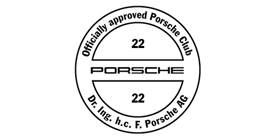You should upgrade or use an alternative browser.
Crankcase vacuum
- Thread starter TTM
- Start date
George Elliott
New member
But a negative pressure in the crankcase is a benefit at higher revs and engines like an RS4 audi V8 have a vac pump I understand in order to ensure there is a constant negative pressure.
Positive pressure obviously leads to oil leakage and air resistance to piston movement. (guess why our dipsticks are designed to be so difficult to remove [8|])
I vaguely recall some effect relating to the piston ring sealing too.
Someone will have a millibar value no doubt.
....You getting the limiter reset to 9000rpm TTM? [
George
944t
bertelli_1
New member
When I used to work in engine testing we'd connect a gas meter to the oil breather & measure the flow to detect any ring wear. Unfortunately I can't remember the figures.....
robwright
New member
George Elliott
New member
George Elliott
New member
I recall being in a WW2 Sherman tank with twin engines, each supercharged 2 stroke. Do you know i cant recall if they were diesel or petrol, It was noisey[
Any developments TTM?
George
944t
bmnelsc
New member
Remember that suction is applied to the oil/air separators via the intake manifold - we don't have a vacuum pump on the 944s.
TTM
Well-known member
The problem here is to link the intake manifold to the AOS on a turbo engine, which makes more vacuum in the intake when the engine is idling than a NA engine.
Georges,
I will update the Engine Build Progress thread in the coming weeks, but you can read the "Smoke at idle" thread on Rennlist to see what I've been working on.
robwright
New member
ORIGINAL: George Elliott
Rob, that negative pressure is induction generated i take it? Mighty engines, very interesting.
I recall being in a WW2 Sherman tank with twin engines, each supercharged 2 stroke. Do you know i cant recall if they were diesel or petrol, It was noisey[]
Any developments TTM?
George
944t
IIRC Sherman's were petrol engined. Knicked from a plane if I am not mistaken.

Posts made and opinions expressed are those of the individual forum members
Use of the Forum is subject to the Terms and Conditions
Disclaimer
The opinions expressed on this site are not necessarily those of the Club, who shall have no liability in respect of them or the accuracy of the content. The Club assumes no responsibility for any effects arising from errors or omissions.
Porsche Club Great Britain gives no warranties, guarantees or assurances and makes no representations or recommendations regarding any goods or services advertised on this site. It is the responsibility of visitors to satisfy themselves that goods and/or services supplied by any advertiser are bona fide and in no instance can the Porsche Club Great Britain be held responsible.
When responding to advertisements please ensure that you satisfy yourself of any applicable call charges on numbers not prefixed by usual "landline" STD Codes. Information can be obtained from the operator or the white pages. Before giving out ANY information regarding cars, or any other items for sale, please satisfy yourself that any potential purchaser is bona fide.
Directors of the Board of Porsche Club GB, Club Office Staff, Register Secretaries and Regional Organisers are often requested by Club members to provide information on matters connected with their cars and other matters referred to in the Club Rules. Such information, advice and assistance provided by such persons is given in good faith and is based on the personal experience and knowledge of the individual concerned.
Neither Porsche Club GB, nor any of the aforementioned, shall be under any liability in respect of any such information, advice or assistance given to members. Members are advised to consult qualified specialists for information, advice and assistance on matters connected with their cars at all times.








